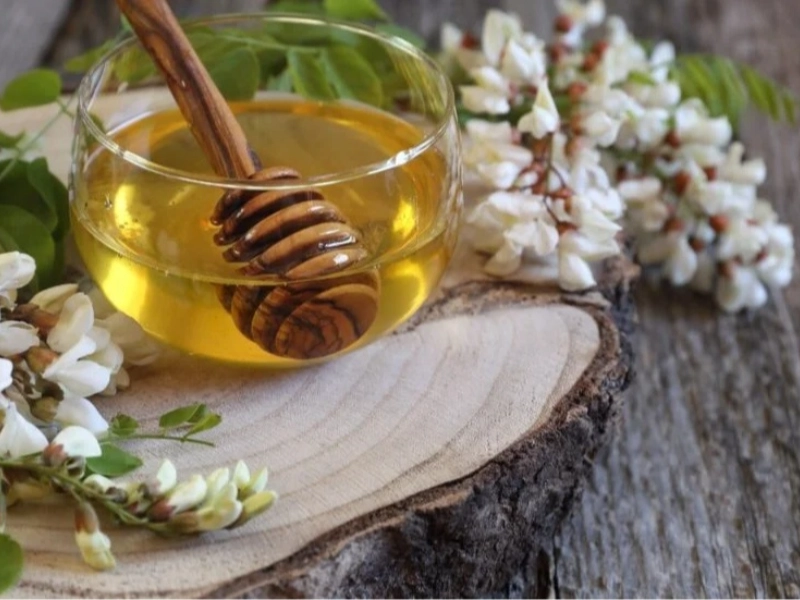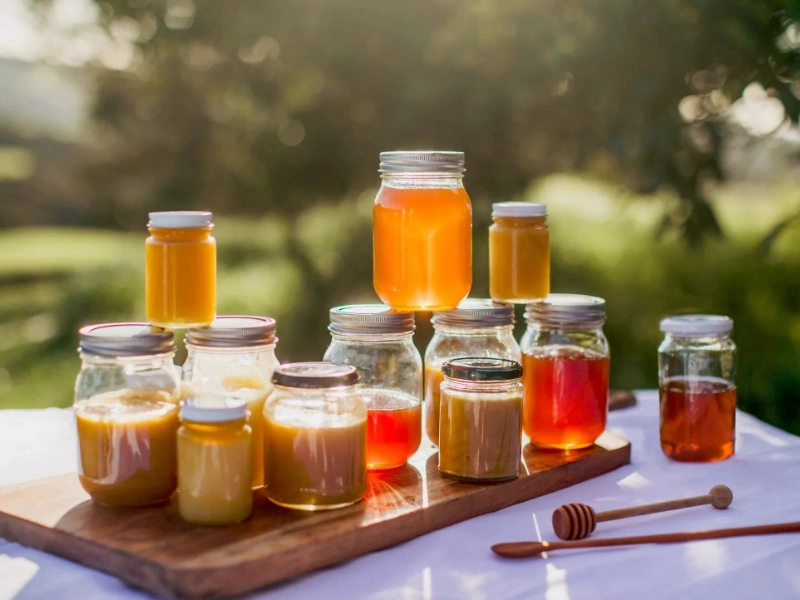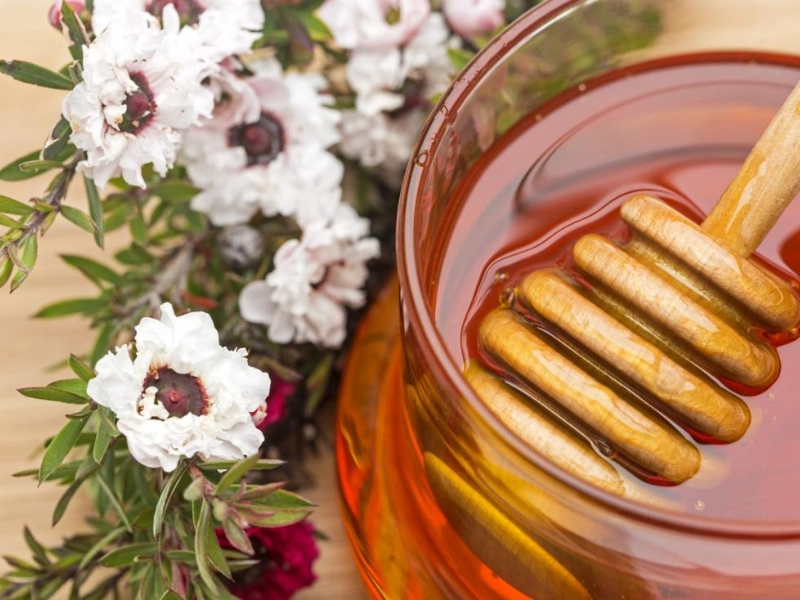
Though it also includes vitamins, minerals, amino acids, and antioxidants, honey is mostly made of carbohydrates—namely fructose and glucose. Along with adding to its nutritional worth, these ingredients improve its antimicrobial qualities. The floral source determines the presence of these chemicals, which influences the effectiveness of specific kinds of honey against bacterial growth.
Hydrogen peroxide is one of honey's main antibacterial properties. An enzyme called glucose oxidase breaks down glucose in diluted honey to generate hydrogen peroxide as a byproduct. Antiseptic qualities of this molecule are well-known. Honey's slow release of hydrogen peroxide serves to establish an environment unfriendly to germs, therefore stopping their multiplication. Against a variety of bacterial types, this method really works well.
 Honey's low water activity level is a critical determinant of its antibacterial action. Honey's strong sugar concentration causes an osmotic action that pulls water from bacterial cells. This dehydration mechanism prevents bacterial development, so hindering the survival of pathogens in honey. Low water activity combined with great sugar concentration produces an environment that most microbes find hostile.
Honey's low water activity level is a critical determinant of its antibacterial action. Honey's strong sugar concentration causes an osmotic action that pulls water from bacterial cells. This dehydration mechanism prevents bacterial development, so hindering the survival of pathogens in honey. Low water activity combined with great sugar concentration produces an environment that most microbes find hostile.
Honey is somewhat acidic with a pH range usually between 3.2 to 4.5. This acidity creates an environment hostile to the growth of many bacteria, so supporting its antibacterial qualities. Acidic environments can interfere with bacterial replication and cause disturbance of their metabolism. Low pH along with other elements increases the potency of honey as a naturally occurring antibiotic.
Rich in antioxidants, honey's antibacterial action is mostly attributed to phenolic acids and flavonoids. By helping free radicals be neutralised, these antioxidants lower oxidative stress and bodily inflammation. Honey's antioxidants help the immune system and boost general health, therefore strengthening the body's capacity to fight diseases. Furthermore, some research point to these molecules possibly directly stopping bacterial development.
 Regarding antimicrobial effects, not all honey is made same. Particularly well-known for its strong antibacterial properties is manuka honey, made from New Zealand's Manuka tree nectar. It comprises unusual molecules, including methylglyoxal (MGO), which explains its great antibacterial action. Though they may not be as strong as Manuka honey, other varieties of honey, such clover and wildflower honey, also have antibacterial qualities. Knowing the variations among honey varieties would enable people to select the best one for medical application.
Regarding antimicrobial effects, not all honey is made same. Particularly well-known for its strong antibacterial properties is manuka honey, made from New Zealand's Manuka tree nectar. It comprises unusual molecules, including methylglyoxal (MGO), which explains its great antibacterial action. Though they may not be as strong as Manuka honey, other varieties of honey, such clover and wildflower honey, also have antibacterial qualities. Knowing the variations among honey varieties would enable people to select the best one for medical application.
Honey's antimicrobial qualities have resulted in its use in several medical contexts. Wound treatment has made use of honey to encourage healing and ward against infections. It is a good treatment for burns, ulcers, and surgical wounds since it is naturally able to generate a moist wound environment with antibacterial action. Honey's calming and antibacterial properties also help it to be frequently employed in traditional treatments for coughs and sore throats.
Many research have looked at honey's antibacterial qualities, so offering scientific data to back up its conventional use. Studies have revealed that honey can successfully stop certain bacterial strains—including antibiotic-resistant ones like Staphylococcus aureus—from growing. Honey has shown in clinical studies to be as useful in wound treatment as some traditional antiseptics. These results show the possibilities of honey as a useful substitute or complementing therapy in contemporary medicine.
 Honey's unusual composition—low water activity, hydrogen peroxide generation, acidic pH, and high antioxidant content—helps to explain its antibacterial qualities. These elements cooperate to generate a setting that prevents bacterial development and accelerates healing. Honey is a natural cure with great antibacterial power based on its extensive history in traditional medicine and mounting amount of scientific data. Honey is still a beloved staple in both cooking and medicine even as studies reveal the whole range of its advantages.
Honey's unusual composition—low water activity, hydrogen peroxide generation, acidic pH, and high antioxidant content—helps to explain its antibacterial qualities. These elements cooperate to generate a setting that prevents bacterial development and accelerates healing. Honey is a natural cure with great antibacterial power based on its extensive history in traditional medicine and mounting amount of scientific data. Honey is still a beloved staple in both cooking and medicine even as studies reveal the whole range of its advantages.